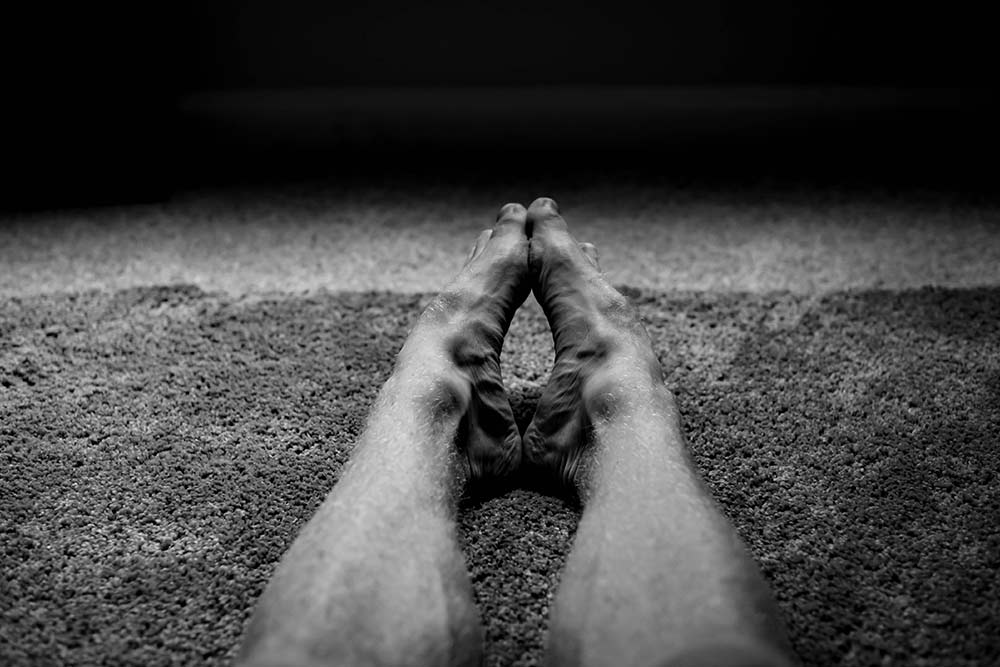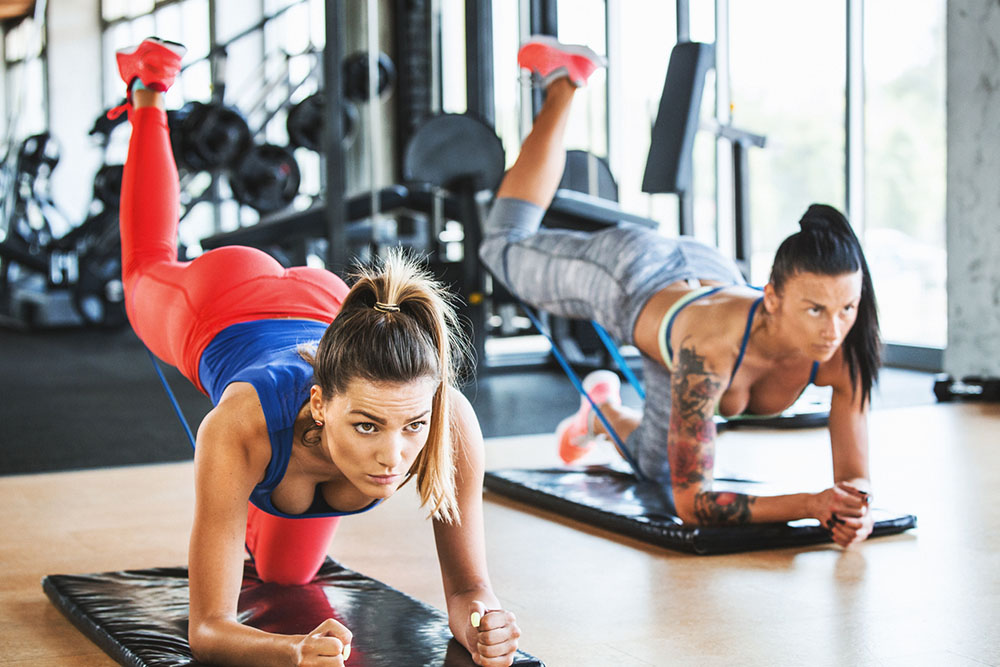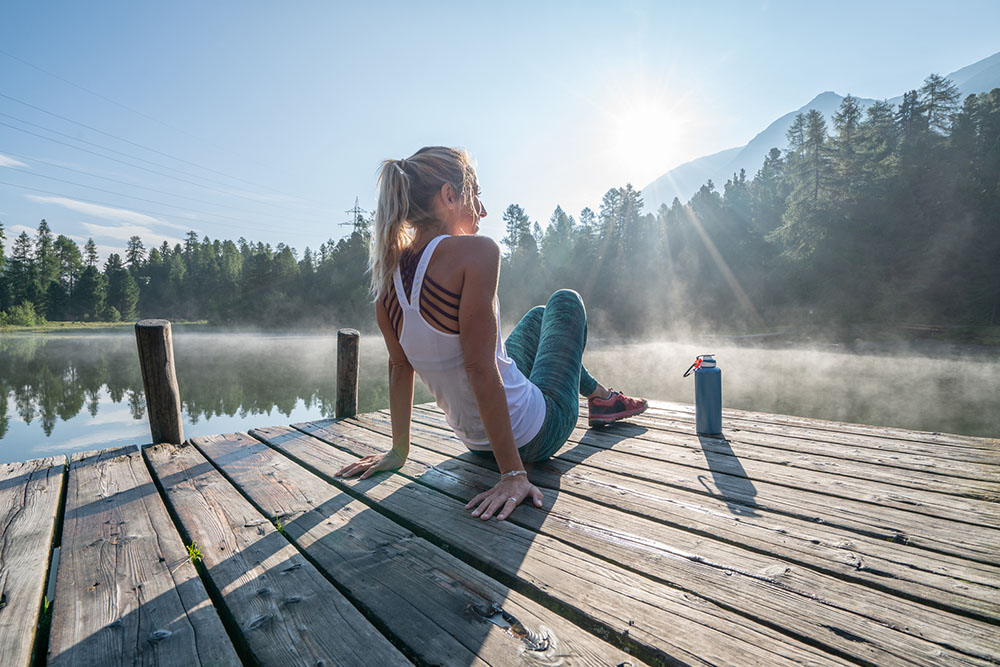7 Ways To Prevent Running Injuries

Ryan Cross, B.A. Hons (Kin), MScPT, FCAMPT
Registered Physiotherapist in Sarnia, Ontario, Canada
Running is one of the most common activities that people participate in to maintain a healthy and active lifestyle. Running injuries happen regularly and evidence suggests that 40-50% of runners experience an injury on a yearly basis (Fields, 2010). These injuries can happen for a number of reasons and understanding some of these causes can help prevent injuries from happening.
Anatomical Considerations
Everyone is built differently and sometimes these unique characteristics can factor into injury. Having a high arch (pes cavus) can lead to running injuries because it decreases the ability of the foot to absorb shock with each running stride. Research has also shown that weakness in the muscles around the hip can lead to running injuries. Having muscle strength around the hip can maintain proper lower extremity alignment and pelvic stability. Eccentric strengthening is starting to be used more often in the treatment of muscles and tendon injuries, especially hamstring and Achilles tendon injuries. Incorporating eccentric training into your strength routine may help prevent running injuries. Other biomechanical factors that can lead to running injuries include under pronation and leg length discrepancy.
Related Article: Eccentric Exercise & Antioxidant Supplementation
Orthotics
Orthotics are shoe inserts that are used to modify structural or functional dysfunctions of the foot or lower extremity. Research has shown that the use of orthotics can help prevent patella-femoral pain syndrome, stress fractures, and injuries related to having a high arch (Fields, 2010). Get assessed by a qualified health professional to determine if you have any structural or functional limitations that would require orthotic use.
Running shoes
Most would agree that having a properly fitted shoe is important for any running program. Proper footwear can improve comfort and prevent injury. There are different types of shoes that might be more appropriate for a runner based on running style and foot type. There are motion control shoes that are designed to reduce over pronation, cushion type shoes for supinators or high arch, or a combination style. Barefoot running is becoming more popular and hypothesized to decrease injury because it requires a shorter stride and a lower impact midfoot to forefoot strike. Choose the footwear that fits your foot structure and running style.
Training Errors
The research shows that 60% of running injuries are due to training errors (Fields, 2010). The two most common types of training errors are excessive mileage and sudden changes in routine. Excessive mileage is different for everyone, but a weekly mileage of greater than 40 miles (64 km) in men was associated with a higher risk of injury. Injury rates tend to be the same even when the same weekly distance was spread over 2, 3, or 4 different sessions (Fields, 2010). A sudden change in running routine (i.e. hill training or interval work) can lead to increased injury rate due to tissues not being prepared for the new stimulus. Training errors can be mitigated if the running program is individualized and follows a progressive plan.
Stretching
 Stretching for injury prevention is getting a lot of attention lately. Traditionally, it has been the consensus that stretching before activity helps to decrease injury. More and more research is starting to show that stretching may not be effective at reducing injuries. These conflicting reports could be due to the differing types of stretching techniques (ballistic, static, dynamic, passive, contract relax, etc), length of time of stretches, and specificity of stretching. Plantar fascia specific stretching was shown to be effective at reducing plantar fasciitis symptoms (DiGiovanni, 2006). Research shows that stretching for too short of a time (less than 10 seconds) is ineffective and that prolonged stretches longer than 60 seconds accomplish no more than stretching periods of 10-60 seconds. In general, stretching on its own may not prevent injury, but there are personalized situations where stretching may be beneficial.
Stretching for injury prevention is getting a lot of attention lately. Traditionally, it has been the consensus that stretching before activity helps to decrease injury. More and more research is starting to show that stretching may not be effective at reducing injuries. These conflicting reports could be due to the differing types of stretching techniques (ballistic, static, dynamic, passive, contract relax, etc), length of time of stretches, and specificity of stretching. Plantar fascia specific stretching was shown to be effective at reducing plantar fasciitis symptoms (DiGiovanni, 2006). Research shows that stretching for too short of a time (less than 10 seconds) is ineffective and that prolonged stretches longer than 60 seconds accomplish no more than stretching periods of 10-60 seconds. In general, stretching on its own may not prevent injury, but there are personalized situations where stretching may be beneficial.
Related Article: The Truth Behind Static & Dynamic Stretching
Warm Up
The type of warming up routine before an exercise program or activity can vary immensely. Although this variability makes it difficult to confirm the benefits of a warm up, the research tends to be in favor of warming up to reduce injury risk before a sporting activity (Fields, 2010). When it comes to running, the type and length of your warm up will depend on the goals of your training session.
Psychological Factors
Our mindset can play an important role in how well we can run each time we go out. It may have an effect on injury risk as well. A review reported that one study found an association of injury risk with dominance, exhaustion, and stressful life events. Another study showed that people who are aware of their physical symptoms and fatigue while running have higher injury rates than those who ignore their symptoms and fatigue level (Fields, 2010). Therefore, we can prevent injury if we simply relax, forget about the busyness of life, and just enjoy the run.
Running is a great activity to stay in shape and improve physical fitness. It comes with a risk of injury, but taking steps to understand the causes of injury and our individual characteristics can help prevent injuries.
Related Article: How To Treat 7 Common Running Injuries
You Might Like:
Ketogenic Diet and Running: What You Need to Know
If you have been around the health and fitness space over the last few years, then you would have heard about the ketogenic diet. You know that diet that helps with weight loss, metabolic disease,...Are Runners Less Likely to Develop COVID-19?
In this weird time of COVID-19, I have heard some strange suggestions regarding how you can prevent infection. Things like drinking colloidal silver, eating more oranges, and bathing in vinegar all come to mind. But...5 Ways to Get Rid of Shin Splints
Ryan Cross, Physiotherapist Pain related to “shin splints” is one of the most common ailments that athletes will complain about. Most runners have had a run-in with the dreaded shin splints at one time or...The Most Efficient Way to Run Faster
Evan Stevens, Sprint Coach Phosphocreatine is the most immediate source of energy we have access to run faster. It is separate from the glycolytic (anaerobic) and mitochondrial (aerobic) pathways and is a way to rapidly...Upper Body Workouts For Distance Runners
When we run long distances it is crucial to focus on form, function, and balance. Running efficiency is effected by all of these, and it will subsequently impact performance if not properly addressed. By limiting...Use the Hurdle Step to Test Your Running Mechanics
An easy way to test or observe your running mechanics is to use the Functional Movement Screen (FMS) Hurdle Step approach. As you will see in the video, this technique will enhance proper running mechanics,...References
DiGiovanni BF, Nawoczenski DA, Malay DP, et al. Tissue specific plantar fascia-stretching exercise improves outcomes in patients with chronic heel pain: a prospective clinical trial with two-year follow-up. J.Bone Joint Surg. 2006; 88:1775Y81.
Fields, Karl B., et al. “Prevention of running injuries.” Current sports medicine reports 9.3 (2010): 176-182.











